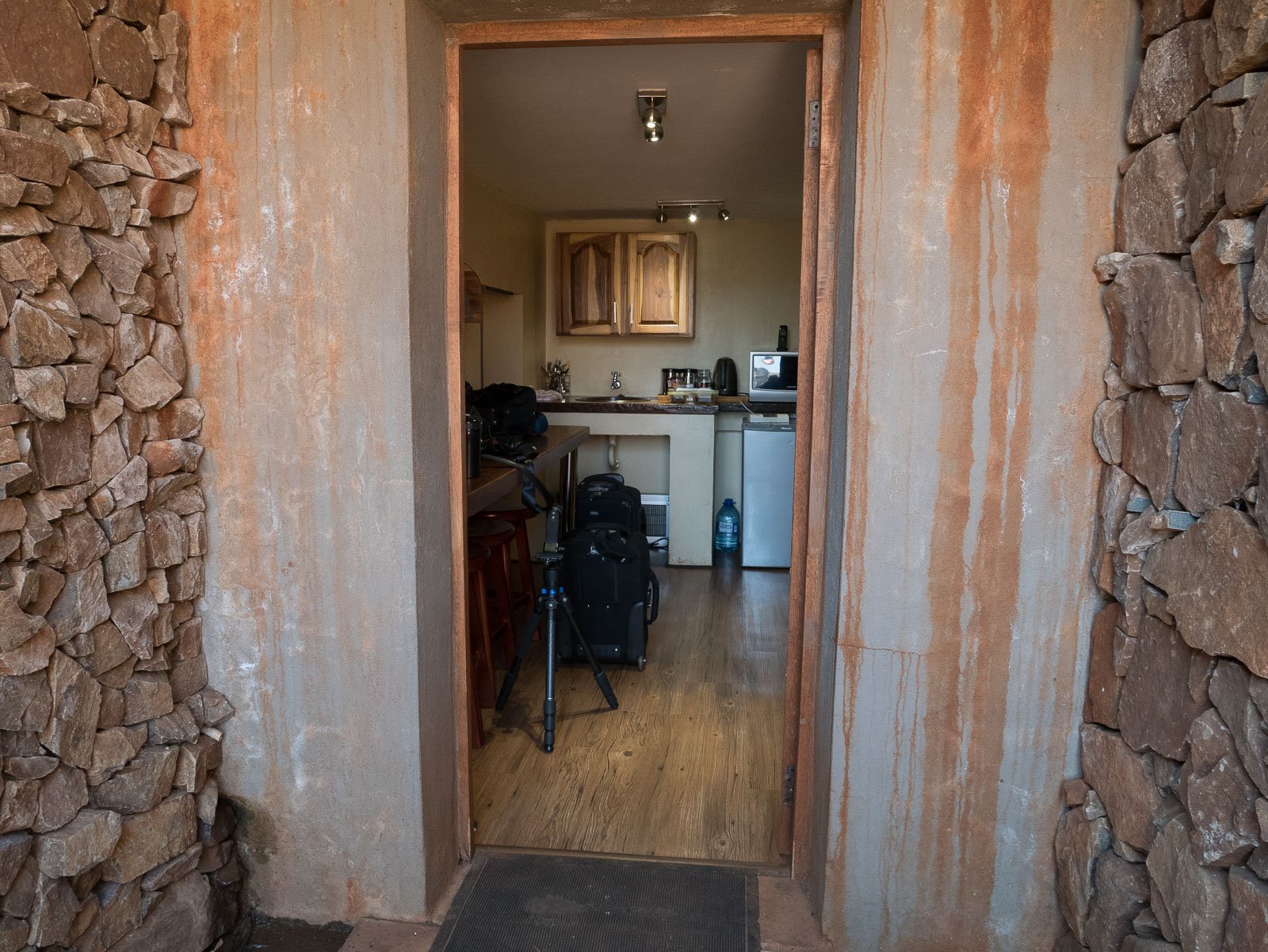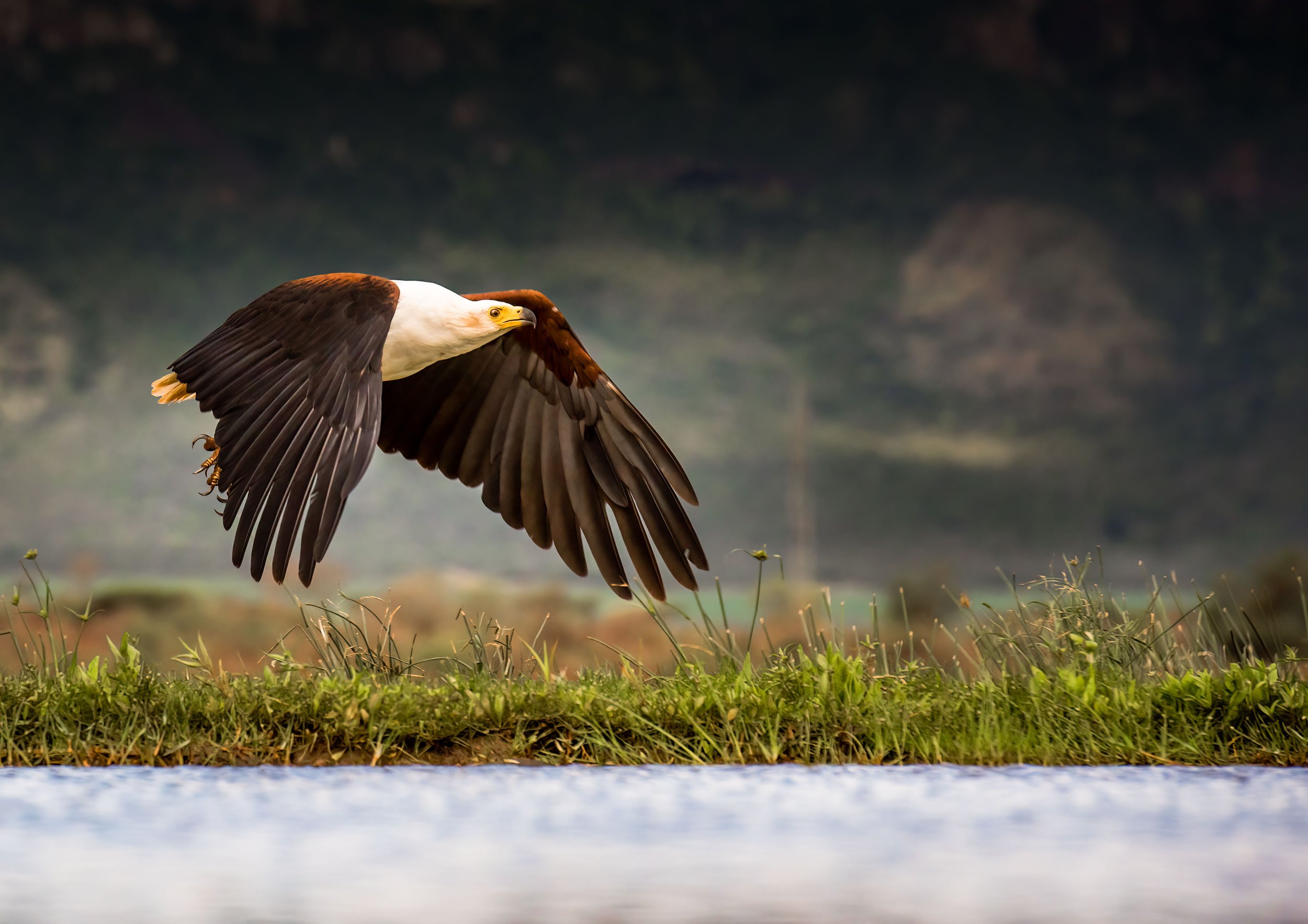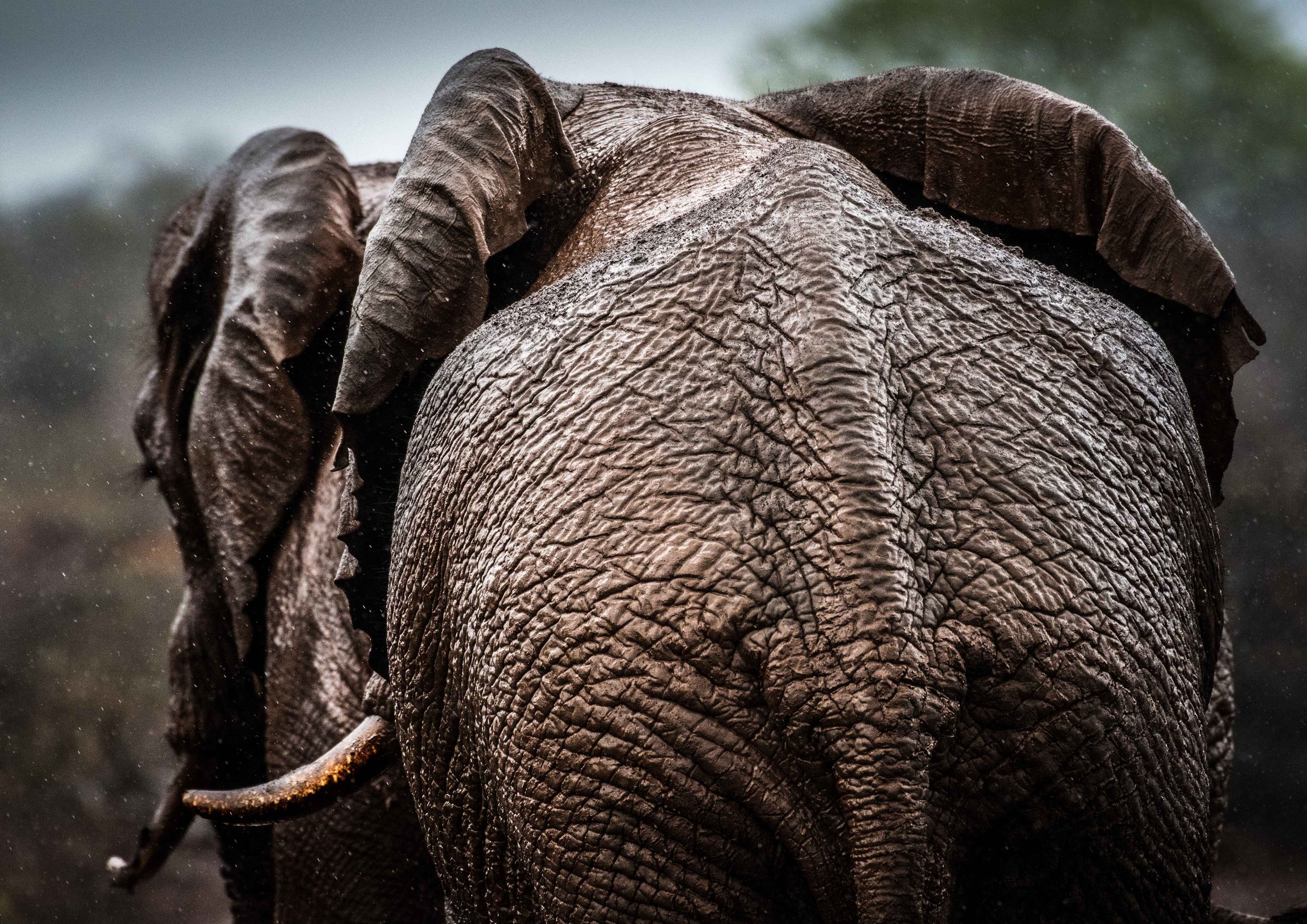Umgodi
OK. Apologies. This is an unmitigated plug for my forthcoming wildlife photography tour to Zimanga in South Africa. But apologies over, I write with the genuine enthusiasm of a wildlife photographer who has discovered something very special. This is a truly awesome location for wildlife viewing, especially if you want to take exceptional photographs of some of the most iconic creatures on this continent.
I had to seize the moment when booking this group tour because the accommodation for the dry months books up very quickly. Nonetheless, I wouldn’t expose clients to an adventure that I hadn’t experienced myself so I travelled to Zimanga, a private game reserve in the Mkuze valley, at the beginning of November 2017. After following my own itinerary from the UK and having a sleepover in Zimbali near Durban, I was driven the remaining three hours to my destination.
By 2pm, I had been greeted by the lovely folk at Doornhoek Homestead and was being transported, with another professional-photographer guest, the ten minutes or so to the Umgodi Overnight Hide. Given I was likely to be awake most of the night, I was pleased to have taken an overnight break at Zimbali. The hide, designed by multi award-winning photographer Bence Maté, surpassed all expectations.
One enters the hide from the rear, approaching via a short, downhill ramp into a small reception area cum kitchenette, equipped with microwave, fridge and coffee/tea making facilities. There is a flush toilet. In the front of the hide is a bedroom with two double bunks separated from the ‘business-end’ by blackout curtains. The viewing area, positioned at eye level, looks out across a waterhole through a wide, narrow, one-way glass window. From front to rear, the waterhole is only about 3m. The viewing area is suitable for four photographers and comes equipped with comfortable chairs and sturdy tripods fitted with gimbal heads. The entire facility is air-conditioned both for the comfort of the photographers and to ensure the window does not steam up.
So what kit and equipment did I take? As a wildlife photographer, the general stress of international travel is always added to by the hand-luggage weight restrictions applied by most commercial airlines. I personally store some equipment in a small, rigid Pelican case and check this into the hold with monopods; tripods; cables and spare chargers etc. I carry the remainder of my equipment, including cameras; optics and batteries, in Think Tank hand-luggage. Inevitably, the weight is such that I find myself running the gauntlet of having it confiscated and stowed in the hold. I usually manage, however, to avoid being challenged.
I carried the following kit into the hide with me:
Nikon D810 (full-frame) and D500 (1.5x crop) gripped bodies
Nikkor 14-28mm f2.8
Nikkor 24-70mm f2.8
Nikkor 70-200mm f2.8
Nikkor 200-500mm f5.6
and a Lumix GM5 for the brief video clip!
I also brought a laptop and hard drive for back-up purposes although in the event there was no time to use it. Incidentally, the hide is equipped with high-speed Internet access, which I did use.
UMGODI: Warthog
Nikon D500 70-200mm f2.8 at 175mm. 1/800, f2.8, ISO640
I mounted the D500 and 200-500 combo on one of the tripods and fitted the 70-200 to the D810. I stuck a small piece of black masking tape over the respective Nikon pentaprism logos to be absolutely sure that there were no reflections in the glass that might be picked up in the final image. The key factor in shooting through glass is to avoid reflections (whether illuminated from inside or outside) and ensuring the glass is clean and mist-free.
Within moments of our guide driving away, small and large birds started to arrive at the waterhole. These included a pair of Indian minor birds; collared doves; weavers and Egyptian geese. We also received our first visit from warthogs and several cape buffalo before the sun dropped behind the hill opposite and so allowing the opportunity for some back-lit shots. Although the viewing window is narrow, as the sun came into view it illuminated us in the hide for about 45 minutes, creating visible reflections of our faces. Short of wearing a black balaclava (which I did not have with me!), the only way to minimise this was to position the lens as close to the glass as possible . Before and after that brief period, reflection was not an issue.
UMGODI: Cape Buffalo and Ox-Peckers
Nikon D810 70-200mm f2.8 at 85mm. 1/640, f5.6, ISO1000
UMGODI: Zebra
Nikon D810 24-70mm f2.8 at 70mm. 1/800, f2.8, ISO1250
As darkness came, we turned on the colour-corrected outside lights, angled from both sides of the waterhole towards the centre and positioned to avoid the need for additional lighting or flash setups. Side-screens ensure there is no light or flare ingress to your shots.
The buffalo, eating from a supply of food near the waterhole, kept coming to drink. Sometimes they were alone, sometimes they came in pairs or larger numbers, but they kept coming all night. About 10.30pm four zebra also came, drank and left.
I used the D500 and long zoom for the small bird shots and at the shorter end of the zoom for the close-up shots of the larger mammals. I experimented widely with the settings. I had the camera in manual exposure mode throughout, making occasional use of auto-ISO and dialling in some exposure compensation when necessary. I used the internal matrix metering to evaluate the light. Outside, only a fairly narrow area of view was well-illuminated, the rest of the area falling into the blackness of night. The metering, in its effort to present the black as grey tones, encourages one to increase the exposure, which with wildlife subjects usually means increasing the ISO rating. There was a lot of trial and error in the exposure settings but I generally underexposed by about one stop; achieving this by experimenting mostly with ISO; but also occasionally tinkering with shutter speed and aperture.
UMGODI: Cape Buffalo
Nikon D810 24-70mm f2.8 at 55mm. 1/125, f3.2, ISO1000
UMGODI: Indian minor treads lightly around a Cape Buffalo
Nikon D500 70-200mm f2.8 at 200mm. 1/640, f2.8, ISO640
During the next few hours we were kept company by noisy bullfrogs in front of our window and at one point I nearly jumped off my chair when a mouse ran across the ledge outside, inches from my face.
I turned in about 2.30am, and asked my companion to rouse me if anything interesting turned up. The hide is equipped with a pattern of infrared beams that activate a beeper if they are crossed by anything larger than a warthog. I was woken about 4.45am by the beeper and got up to see a wooly-necked stork strutting around the pool looking for frogs or maybe even the mouse. The frogs had long since departed and the mouse had too much sense to make itself known. The stork had to make do with some large insects that it fished from the water. It was joined a few moments later by a hamerkop, also looking for an early breakfast. It was just starting to get light and warthogs, starlings and the minor birds were beginning to return.
About 7.30am a new round of mammalian visitors started to arrive and, interspersed with visits from warthogs, provided us with intense activity for almost 90 minutes. Firstly there were kudu; a pair of males followed by five females. They were in turn followed by a small herd of about fifteen, female cape buffalo, being harassed and nibbled by dozens of ox-peckers and accompanied by young calves. They actually entered the waterhole, pushing one-another forward until they came within inches of the viewing window. Out came the D810 and 14-24 combo set at 14mm, my heart racing at the sight and proximity of these intimidating beasts. 14mm is not a focal length I commonly use in wildlife photography, but even at 14mm, I barely managed to capture the breadth of the scene before me.
UMGODI: Female Kudu
Nikon D810 24-70mm f2.8 at 70mm. 1/1250, f4.0, ISO64
UMGODI: Cape Buffalo
Nikon D810 14-24mm f2.8 at 14mm. 1/800, f5.6, ISO64
When five giraffe then arrived for an early morning drink, the lens came into its own. The images required some perspective correction in post and still contain some interesting elements of distortion. It was also a challenge to avoid ‘dinking’ the glass with the lens hood, so close was I to the action. When they bent to drink, but for the glass, their silken nose was close enough to reach out and touch. As they lifted their heads from the water, they liberally splashed the glass.. a factor requiring a small element of retouching in some of the later images.
UMGODI: Giraffe
Nikon D500 200-500mm f5.6 at 200mm. 1/800, f5.6, ISO400
The giraffe suddenly became unusually skittish and I suspected our transport had arrived and was waiting a short way off. We had fifteen more minutes with these extraordinary creatures, however before it was time to return for breakfast.
UMGODI: Giraffe
Nikon D810 24-70mm f2.8 at 44mm. 1/640, f5.6, ISO64
If, like me, you are a bit of a nerd and are interested in statistics, here are a few from the first overnight stay at Umgodi. I took 5845 images. Of these, the percentages break down as follows:
Camera Bodies
Nikon D810: 53%
Nikon D500: 47%
SCAVENGER HIDE
Lenses
Nikkor 14-24mm: 12% (all using the D810)
Nikkor 24-70mm: 33% (all using the D810)
Nikkor 70-200mm: 34% ( of which, D500: 74%; D810: 26%)
Nikkor 200-500mm: 22% (all using the D500)
Interestingly when examining the use of these (all zoom) lenses, 47% of the shots were taken at one end of the zoom range or the other. This included when the 70-200mm was fitted to the D500, a crop body in which the zoom range was an equivalent 105mm-300mm. Unsurprisingly, given the proximity of the subjects, only 1.4% of the crop was taken using the 500mm (=750mm) end of the 200-500mm lens. Overall, however, perhaps this is an argument for taking primes instead of zooms, albeit, 53% of the shots were taken with the intermediate focal lengths.
In summary, both cameras and all the lenses contributed to the shot total and in turn, in almost the same proportions, to the ‘keepers’ and ‘wall-hangers.’
Zimanga wasn’t all about Umgodi, however. Despite November being the austral summer rainy season and probably therefore, the wrong time of year to get the most from a visit to a South African game reserve, I did achieve some very rewarding images at the Scavenger, Lagoon and Mkombe Bird Hides.
SCAVENGER: African White-backed Griffon Vulture
Nikon D810 300mm f4. 1/2000, f6.3, ISO400
SCAVENGER: Lappet-Faced Vulture
Nikon D500 200-500mm f5.6 at 500mm. 1/1600, f6.3, ISO500
LAGOON: African Jacana
Nikon D500 200-500mm f5.6 at 500mm. 1/640, f6.3, ISO500
LAGOON: African Fish-Eagle
Nikon D500 70-200mm f2.8 at 200mm. 1/1250, f6.3, ISO400
Male leopard sheltering from the rain.
Nikon D500 200-500mm f5.6 at 500mm. 1/100, f6.3, ISO1250
I only ventured out on one rain-soaked, regular game drive and still managed to get some keepers of an elephant herd and a young male leopard hiding from a torrential downpour. The leopard had sensibly secreted itself in dense vegetation and avoided the water, which is more than I can say for myself. While we paused to watch him, I paid the price for occupying a full row of rear seats to myself. When we pulled forward, the rainwater that had collected in the canvas canopy went over the rear edge, onto my head and straight down my collar. Yuk! At least my cameras stayed dry.
On a positive note, the inclement weather made for diffuse lighting, enhancing the ridges of the elephant’s coarse hides, reddened from wallowing in the orange-brown Zimanga mud.
Two young bull elephants
Nikon D500 200-500mm f5.6 at 270mm. 1/100, f6.3, ISO1250
Notwithstanding, on this visit, Umgodi had it all. Except, that is, for elephants. Although time was now running out: I had an onward journey to Namibia the following day, I couldn't resist spending my last night in the Umgodi Hide on the off-chance that elephants might come. I had spent that afternoon in the Lagoon Hide and so didn't get to Umgodi until nearly 8pm. My gamble paid off. The elephants came several times in the dark; the twilight and the orange glow of the early morning sunrise. I was alone in the hide and had my equipment spread out and prepared. Nonetheless, my heart missed a beat when I first saw the legs of a bull elephant come into view. I had to crouch on the ground as I had done when the giraffes had come a few mornings previously and variously fit the two wider-angled zooms (14-24 and 24-70) to the D810 as they came and went. The biggest challenge was suppressing the adrenalin whilst trying to hold the camera steady. I would swear that these bad-boys were staring straight at me.
UMGODI: Elephant
Nikon D810 24-70mm f2.8 at 24mm. 1/500, f3.2, ISO400
UMGODI: Elephant
Nikon D810 24-70mm f2.8 at 30mm. 1/100, f3.2, ISO800
The fatigue I experienced during the twelve-hour journey to Windhoek later that day was well worth the benefits from my last night. The encounters with the giraffe and elephant at Umgodi are without doubt some of my most impactive wildlife experiences to date.
When I returned home and first enthused about the Zimanga experience to friends, it was suggested to me that it sounded a bit like watching animals in a zoo! That is, there were animals and they were being viewed on the other side of a glass screen. I hope my description here has improved somewhat, for I cannot imagine a more un-zoo-like experience. Apart from anything else, it is the humans, not the animals, whose movement is restricted and constrained.
From the viewpoint of a wildlife photographer, it has everything, One is very close to large, wild animals, at or below eye level; a must for achieving dynamic and engaging angles. Unlike a regular game drive, the animals, unaware of the hide, are not at all influenced by the presence of humans. At night the scene is professionally lit and during the day, the ground falling-off beyond the waterhole makes for a perfect, uncluttered background, avoiding unnecessary distractions and when using longer focal lengths at wider apertures, allowing for silky-smooth bokeh.
So, back to the plug! I am returning to Zimanga in June 2018 to guide clients on a wildlife photography tour. If you are interested in joining me please call, email or click on the link below for further details.





















